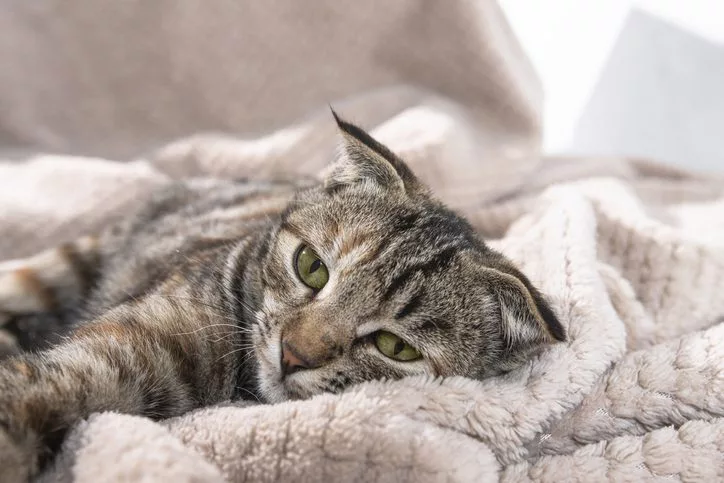Five Signs of a Cat in Pain in Warrick County
As a cat owner, you should always be able to tell when your cat is in pain, but this can be very difficult to do except when the case has become extreme. This is because cats are very good at hiding their discomfort and pain. After all, it is not that much of a good idea to show you are in pain as a potential mate or predator may be nearby. When you can tell that there is something wrong, you will be able to identify possible illnesses and keep your cat healthy and happy.
Cats that suffer from symptoms of illnesses and chronic pain will find it easier to hide their discomfort for a long time, but cats who are experiencing intense and acute pain will probably show you clues to let you know they are hurt. When your cat is experiencing physical pain, it can also affect them emotionally, causing them to be more distressed than normal. Every cat will show a different sign when experiencing pain, so it is up to their owners to be able to detect that something is wrong.
Veterinarians will find it easy to detect even the most subtle signs of pain in cats, but as a cat owner, it is essential that you are also able to do this. There are some common signs you can look out for, which will help you better understand your cat’s needs. This article outlines five major signs of a cat in pain in Warrick County, so next time you see any of these signs, you will know that you should call your veterinarian immediately.

Five Signs My Cat is in Pain
Before moving on to the five symptoms your cat may exhibit when in pain, keep in mind that your cat does not need to display all these signs for a problem. One sign is enough to show that they are in pain and need help.
1. Decreased Activity and Energy
When your cat begins to show a reduced interest in positive things they liked to do before, like exploring outside and playing, they are likely in pain. It is normal for your cat’s energy level to decrease when they are getting older, just like it is in human beings, but when the change happens rapidly, you should suspect something is wrong, and it is more than just old age.
It is completely normal for your cat to have decreased energy when in pain, just like humans cannot do much. If they do not want to participate in playtime anymore or they keep staying in a lying position, they are probably in pain. As they age, they can suffer from many degenerative illnesses and other health problems, which will surely cause pain and discomfort.
2. Changes in Behavioral Patterns
If you notice a change in your cat’s behavioral pattern, they are probably in pain. They may start to stay away from things that will cause pain or make it worse, like jumping onto raised surfaces. This sign of pain is usually always overlooked as cat owners see it as normal, but that should not be so as it is an early indicator of illness or discomfort in your cat.
Your cat may go from spending all their time with you and being engaged daily to staying on their own and not being there to greet you when you come back from work. Your cat may also show signs of aggressiveness, like hissing at you or anyone else in the home when they come close – the friendliest cats can end up biting or scratching people when in pain, especially if you touch the affected area.
All these behavioral signs are ways to tell if your cat is in pain, and they should not be overlooked. Once you notice them, especially unexplained aggressiveness, you should contact your veterinarian in Warrick County, IN immediately to rule out the possibility.
3. Change in Sleeping Patterns
A sudden change in your cat’s sleeping pattern is another way to tell if your cat is in pain because discomfort can cause your cat to change their sleep pattern. Like how a person will find it difficult to get comfortable when in pain, cats also struggle with this and may end up sleeping in places they do not usually sleep in. So, this is something you should look out for.
When cats are in pain, there is a possibility that they might look for warmer places like a heating pad when they want to rest or lower places. Cats don’t like to sleep on the floor as they prefer elevated spots, so when they do, you should suspect that something is wrong.
4. Changes in Grooming
Increased grooming to a particular spot or reduced general grooming is another indicator that your cat is in pain. If you notice that your cat is grooming less of their body than they usually do or not even grooming, you should suspect that they are in pain. Cats love to be clean always, so it should become a topic of concern when that changes generally.
So, you should always keep an eye on your cat’s coat; if it appears greasy and unkempt, you should know something is wrong. As stated above, increased grooming to a particular spot is also a sign that your cat is in pain. This means that if they spend too much time grooming one part of their body till they get bald patches or sore skin, they are probably trying to soothe the affected area.
5. A Decrease in Thirst and Appetite
Cats are not entirely different as pain is a powerful thirst and appetite suppressant – when they are in pain, they lose interest in drinking and eating meals. When humans are in pain, they tend to stay away from food because it is too difficult to eat or lose the appetite to do so. So, if your cat is showing this sign, it is likely that they are in pain.
Apart from pain, changes in your cat’s drinking and eating habits could be an early indicator of a severe health problem, so it should not be overlooked. Once you notice these signs, it is advisable to contact your veterinarian immediately.
Contact Warrick Veterinary Clinic if You Notice Signs of a Cat in Pain
As stated above, your cat does not need to display all the signs listed above to show they are in pain, as they could only display one. Also, not every one of these behavioral changes is pain-related as they could be the cause of something else. But, one should not rule out the possibility, which is why it is always best to contact your veterinarian if you notice these signs. For more information, contact Warrick Veterinary Clinic by calling us at (812) 897-4855. We are proud to provide exceptional veterinary medicine and compassionate care for your precious pet.
